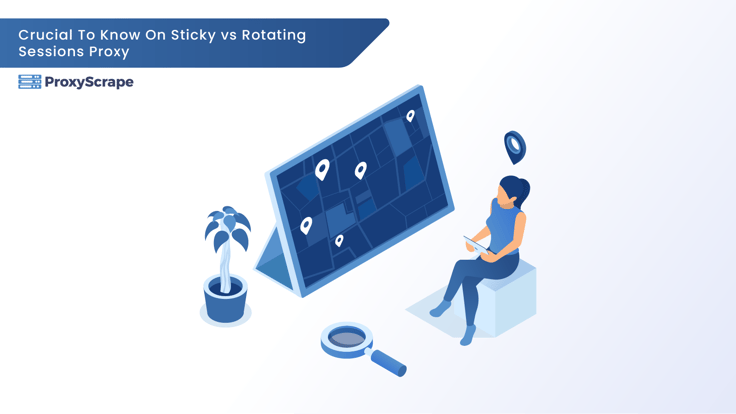Sticky vs Rotating Sessions Proxy: Which Is Best? “Proxy server” is one of the most used terms in the cyber security sectors. But what is it actually? A proxy server is an intermediary server that sits between you (the client) and the target server (the server you are trying to access). Usually, without any proxy
Category: The Differences

Crucial To Know On Sticky vs Rotating Sessions Proxy In 2025
By: ProxyScrapeJan-09-2023
Websocket vs HTTP: 6 Unique Differences & Use Cases
By: ProxyScrapeDec-02-2022
Websockets vs HTTPs – which is best? This is the most common question that network users or professionals might keep ruminating on. Statista says that there are 5 billion internet users worldwide. According to statistics, internet usage is growing at an exponential rate. With this development, comes the need for communication. This article will discuss
Shared Proxies vs Private Proxies: Differences and Use Cases
By: ProxyScrapeNov-08-2022
A proxy is a server application that runs between the user and the server. The user’s request flows through the proxy to the server hosting the website, and the response returns to the user through the same proxy. A proxy provides security and privacy and enables the server to share its load. Businesses leverage digital
Web Scraping vs. API – 5 Unique Differences
By: ProxyScrapeOct-20-2022
Web scraping vs API is the comparison of popular data extraction methods that are used to collect a wide range of data and process them for analysis purposes. Allied Market Research says that the data extraction market value will reach $4.90 billion by 2027. Anything and everything you see around you is data. Performing necessary
IPv4 vs IPv6 — 10+ Key Differences
By: ProxyScrapeAug-25-2022
A IPv4 vs. IPv6 comparison is common among people who are looking for an efficient internet address. Statistics say that more than 60 percent of the global population uses the Internet medium. These growing Internet users also increase the demand for unique addresses. Another interesting fact is that people usually have more than one device
Choosing The Right Selector For Web Scraping: CSS or XPath
By: ProxyScrapeFeb-07-2022
Do you know which is the correct selector to use in web scraping? Web scraping has been quite popular in the recent decade to extract data from the internet. It helps businesses acquire and analyze data to make better business decisions. Thanks to automated technologies, web scraping has never been easier than it is now.
Concurrency vs Parallelism: Significant Differences For Web Scraping
By: ProxyScrapeJan-17-2022
When it comes to concurrency vs. parallelism, it may be apparent as they refer to the same concepts in executions of computer programs in a multi-threaded environment. Well, after looking at their definitions in the Oxford dictionary, you may be inclined to think so. However, when you go deeper into these notions with respect to
Key differences between IPv6 and IPv4
By: ProxyScrapeDec-27-2021
Having an IP address is a way to identify your device on the internet to communicate with other devices. Without IP addresses, the internet can’t exist. In this article, you’ll gain an overview of two different types of IP addresses, their differences, why you need both of them, and, more importantly, how you could use
Reverse Proxy vs. Forward Proxy: What’s the Difference?
By: ProxyScrapeMar-16-2021
Many entities already used forward proxies for their needs, but what is a reverse proxy? Well, that’s what you’re about to learn. In essence, reverse proxies serve an entirely different purpose from a forward proxy. However, the difference lies in the fact that the communication is reflected in the back-end. This means that a reverse
Socks vs. HTTP Proxy: How They Work and Key Differences
By: ProxyScrapeFeb-24-2021
As there is a massive rise in proxies’ usage for carrying out internet tasks, vendors have introduced various types of proxies over the years. In this article, you will discover significant differences between HTTP proxies and Socks proxies, which should ease your decision-making process when deciding which proxy to use over the other. Knowing the